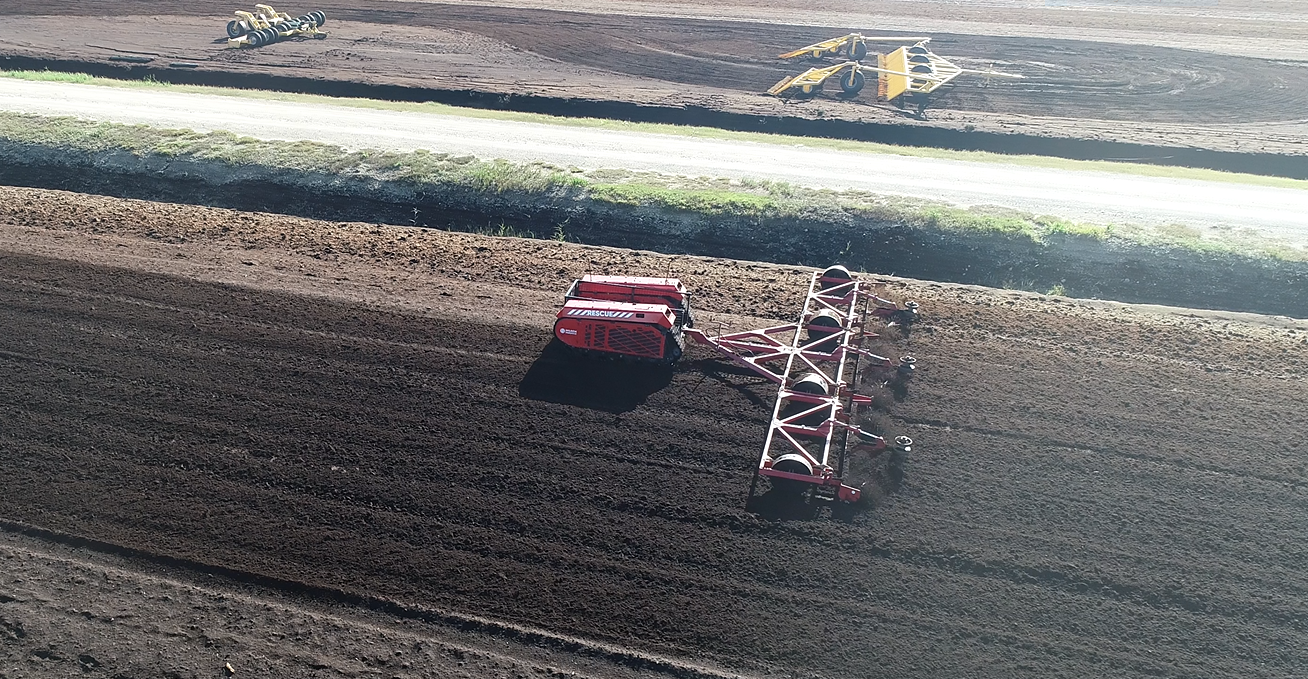In a recently published academic article Riho Kägo, a researcher at Milrem Robotics concluded that using robotic systems for peat harvesting significantly decrease labour and fuel costs.
In an article titled “Assessment of using state of the art unmanned ground vehicles for operations on peat fields” published in Mires and Peat, a peer-reviewed internet journal focusing specifically on mires, peatlands and peat, Kägo presents a concept for replacing the tractors that haul machinery during necessary operations on peat fields with centrally controlled unmanned ground vehicles (UGVs).
The objective of switching tractors for UGVs is to reduce operational costs in terms of human labour, fuel consumption and the associated CO2 emissions.
As Kägo determines: robotic systems have a huge benefit on peat harvesting.
“It is demonstrated that utilising currently available robotic technology for milled peat extraction by either the Haku method or the ‘vacuum harvester’ method can reduce production-related labour requirement by 34–43 % and fuel consumption by 21–26 % with a corresponding reduction of CO2 emissions,” Kägo wrote.
Depending on the area of the extraction surface, the number of UGVs and the method of extraction, the fuel consumption and labour requirement for one season were determined using a combination of data from production records compiled by peat companies and field measurements using the UGV (Milrem Robotics’ Multiscope) under assessment.
Kägo adds that future advances in UGV technology will increase the advantages of robotic technology by reducing the requirements for human intervention as well as by using green energy in fully electric UGVs.
The study was conducted in cooperation with scientists from the University of Tartu and the Estonian University of Life Sciences.
